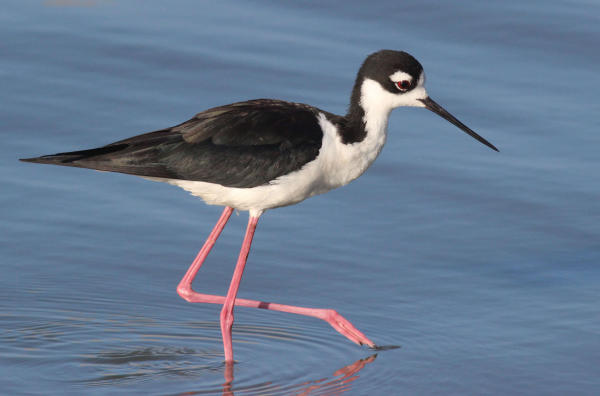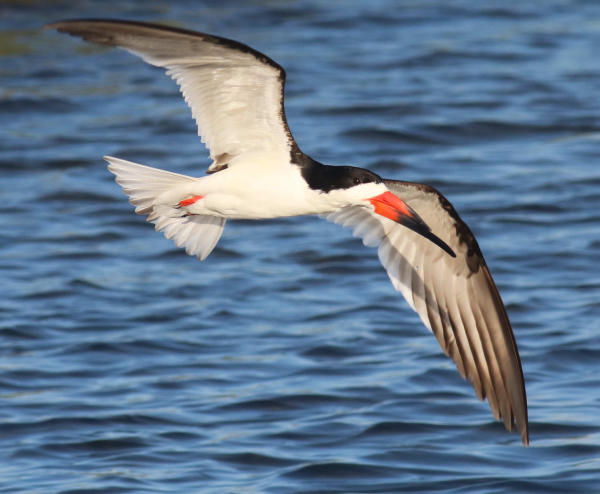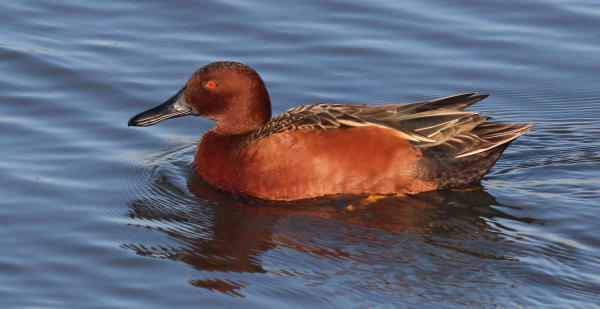
When you’re up for a birding break and have a free afternoon, where do you go and how do you get around? What birds are you most interested in finding, studying or photographing? Many local parks and preserves provide birders with the opportunity to enjoy birding via different modes: walking, biking, kayaking, auto touring – you know the options. Southern California, my second home, is where my favorite “birding loop” is classic and worth sharing as an example of a great plan for a free afternoon:
After spending a weekend midday watching the action and socializing with friends at the beach volleyball court in Seal Beach, south of Los Angeles, I often feel the call of the wild. As the sun begins its afternoon “descent” and the light gets right for photography, I often begin a birding drive a short distance down Pacific Coast Highway to Bolsa Chica Ecological Preserve on the north side of Huntington Beach. The fresh, brackish and saltwater wetlands at Bolsa Chica attract a fun assortment of birds during the nesting season and winter, as well as during spring and fall migrations.

The opportunity to walk along expansive wetland edges provides good exercise, although the birding is usually so good you don’t hike very far before you’re drawn to the avifauna. Bolsa Chica provides great viewing and photography opportunities for Black Skimmers, California Least Terns, Elegant Terns, Western and Heermann’s Gulls, Brown Pelicans, Western Grebes, Surf Scoters and other ducks, rare Ridgeley’s Rails, and a variety of sandpipers and wading birds that varies through the seasons.
Recently, Reddish Egrets have been a favorite addition to the avifauna, probably originating from a Mexican population to the south. Some winters, one or more species of loons can be found, including Pacific, Red-necked and Common Loons. Raptors are common, including Ospreys, White-tailed Kites, Northern Harriers and occasional Peregrine Falcons. When you’ve walked enough, you can languish on the boardwalk that bisects the vast wetland area and wait for the birds to come to you.
After a short drive farther south on PCH (Pacific Coast Highway) to Newport Beach, I enjoy unloading my bicycle to take advantage of the bike route through another birding hotspot, the Upper Newport Bay. This expansive coastal wetland dictated by daily tide cycles, attracts a variety of ducks, wading birds and sandpipers that is ever-changing through the year. Raptors tend to soar along the cliffs that line the east side of the bay above the bike route, which is especially rewarding for me. A hike into the associated uplands may yield a couple special species, California Gnatcatchers and Allen’s Hummingbirds. A fun option for some people is to kayak into the “Back Bay” for water/bird action (there are rentals available on the bay, and birds are protected in no-kayak areas).
Last stop on my Orange County coastal birding loop is the nearby San Joaquin Wildlife Sanctuary in Irvine, California. Elevated trails permit visitors to walk between or around many freshwater lagoons that attract White Pelicans, Black Skimmers, Elegant Terns, a variety of ducks including Cinnamon Teal, and many species of shorebirds including Spotted Sandpipers, Black-necked Stilts and American Avocets. Shrubs and trees along the hiking trails through the north and west portions of the sanctuary attract many interesting birds varying from Anna’s Hummingbirds, Bushtits, Yellow-breasted Chats, Blue-gray Gnatcatchers, wintering warblers and many more. Other favorites in the area are White-faced Ibis and nesting Ospreys, and rare avian visitors include spectacular Vermillion Flycatchers some years.

It’s interesting to note that San Juaquin also tends to attract some attention-grabbing introduced species, including Egyptian Geese, Mandarin Ducks, Orange Bishops, Yellow-crowned Bishops, and Scaly-breasted Munias. Should you find yourself at San Juaquin, be sure to visit the Audubon House (a favorite of mine), which is operated adjacent to the parking lot by the Sea & Sage Audubon Chapter. You’ll find free hiking maps, a list of rare birds sighted in the area recently, a great library of bird books, and a host of similar books and other birding items to check out or purchase.
Whether you’re hiking, biking, kayaking or driving, a couple hours can yield great birding and photo opportunities close at hand. Of course, when I’m limited by time or geography, I can limit my outing to just one of my three Orange County birding favorites for a quick bird-based outing. It may take a while for you to come up with your own favorite birding route near your home, but be sure to enjoy your next birding adventure soon.
Article and photos by Paul Konrad
How does birding fit into your lifestyle? Do you have a favorite birding hotspot? Share your observations and photos at editorstbw2@gmail.com